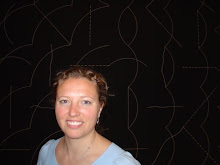Ehrenreich goes undercover and works as a waitress, maid,
and store clerk in a variety of US cities.
She is a middle-aged, doctorate-holding career woman. Nobody blinks as she enters each town and
job. Nobody gives her a break as she tries
to get a meal from food banks or find affordable housing. In fact, she fits in just a little too well
for comfort. Every day Ehrenreich works
hard at her tasks and comes away realizing that she can’t do this work and be
the same woman as before. She has
entered the realm of those whose work is unvalued. She has felt the correlation of discovering
herself to be unvalued.
So would you or I.
Ten years later, I believe that the only real difference in
American life is the lack of easily acquired work. Unskilled workers, which Ehrenreich correctly
defines as workers skilled in physical capacities, perhaps learned while
working, may still find jobs. Should
they exist, I do not believe that the jobs are better paid, better hours, or
even sufficiently houred.
Doubtless, Ehrenreich could have lived her study
differently. She made finite forays into
cities, not the country-side. She had
few ideas or connections in the areas she chose. She stumbled into a couple of unexpected
drawbacks. She didn’t use any government
programs. Maybe certain changes would
have completely transformed her experience.
For example, maybe she could earn a living by applying to higher level
jobs with her actual resume.
Reading this social documentary a decade later and finding
no particular ease on the subject, even though the piece is still one that gets
mentioned and noticed, is unsettling. Although
we can see many issues that have arrived in the last half century, this
particular issue has existed during prior eras in America. Is it in fact, universally present?
What Ehrenreich hasn’t discovered, and I really want to
know, is why has America allowed unlivable wages for work? How do we resolve the situation of the woman
working every day whose aspiration is to be able to take a day off work, if she
had to, and still be able to buy groceries for the next day?
Although Ehrenreich and I have lived different lives, in
different times, and with different values, on this issue we are united. There is hard work to be done, and many
people have more things piled against them than they know, but when one
person’s sweat doesn’t even buy enough bread, how well has our affluent society
exercised the ideal of life, liberty, and the pursuit of happiness?
